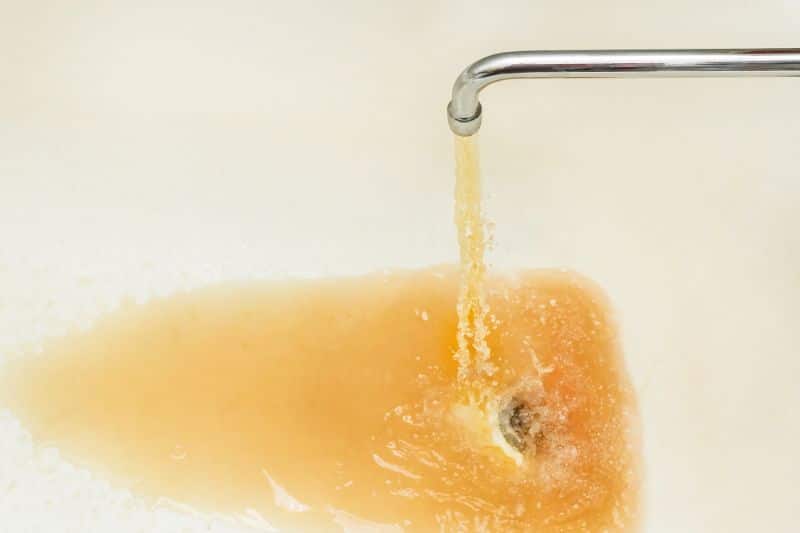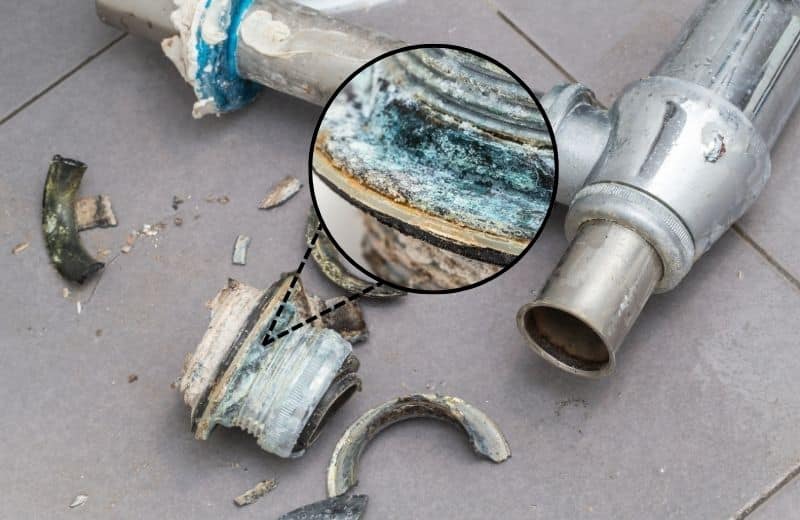It’s estimated that about 7.2 million Americans get sick from waterborne disease every year. While we’re lucky to have some of the safest water in the world, that doesn’t mean that the population is protected from harmful pathogens around the clock.
If you own a private well, you’re particularly at risk of getting sick from your water. While public water is disinfected in a water treatment facility before it reaches our homes, it’s the responsibility of well owners to make sure their own water is clean and safe for drinking.
I’ve been researching, reviewing and writing about well water treatment systems for over a decade, so I know all about the signs and potential dangers of contaminated water. In this guide, I’ll be discussing the things to look out for in contaminated well water, and how to know if your water contains E.Coli or coliform bacteria.
Table of Contents
🔬 Contaminated Well Water Signs to Look Out For
The signs of contaminated water to be on the lookout for are:
Water Appears Cloudy
Look at the water flowing from your faucet. If it looks cloudy or murky, your water may contain silt, rust, dirt, or clay salts – a sign of poor water quality.
Well water from the ground will come into contact with these materials as it travels towards your home. Particles will be picked up by the water and carried through your plumbing, ultimately leaving your faucet.
Unclear water can also be a sign that your plumbing needs replacing. Rusting or corroded pipes can leach flecks of metal into your water that can also end up in your drinking glass.

Sediment is Present
Sediment is caused by exactly the same materials: silt, dirt, clay, rust, and more. The bigger particles of sediment may be large enough to be seen, and may float in the water or sit in the bottom.
If sediment is in your water, it’s a good sign that smaller particles that can’t be seen by you have also made their way into your water.
Discoloration
Discolored well water will likely contain iron or tannins. Iron and tannins aren’t dangerous to health in small amounts. However, both can affect water quality. Iron can pose an aesthetic problem in your home, and tannins can indicate that there are other harmful contaminants in your water.
Tannins give water a tea-like color, while iron gives water a darker brown, orange or reddish hue.
Too much iron can damage your home’s well water system and pipes. High levels of iron can leave red or brown stains that are difficult to remove, and consuming too much iron in your drinking water may also affect your health – it can cause vomiting, nausea, stomach pain, and diarrhea.

Oily Film
If your water has an oily film that breaks apart when you stir it, it’s likely that it contains a combination of excess organic matter and minerals containing iron.
These impurities can create an oily sheen that sits on top of water, caused when the minerals in the water come into contact with air and oxidize. Water with an oily film may also deposit slimy deposits from iron bacteria.
If you have high quantities of iron bacteria in your water, your well pump might be worn out. Alternatively, your well may have been installed too near to an untreated lake or pond.

Sulfur Smell
If your water has the rotten egg smell of sulfur, it’s likely that it contains hydrogen sulfide gas or sulfur bacteria – or both.
As a naturally-occurring bacteria, sulfur bacteria is produced when rocks and soils decay and chemical reactions take place. Sulfur bacteria can do more than just affect water quality – they can be particularly dangerous in well water systems as their slime-like substance promotes the growth of other types of bacteria, including iron bacteria.
Sulfur bacteria can also release hydrogen sulfide. This gas gives off a sulfur smell, and can be dangerous in high quantities.
Exposure to too much hydrogen sulfide gas can cause health problems like respiratory tract irritation, nausea, tremors, headaches, convulsions, and eye and skin irritation.
Metallic Taste
If your water has a metallic taste, like pennies, it’s likely that it contains acidic contaminants. Iron is a common contaminant that gives water a metallic taste.
Acidic impurities can damage your home’s pipes and plumbing, resulting in corrosion and rusting. If your water is too acidic, it can also lead to a range of health problems when you drink it, including corroded teeth, heavy metal poisoning, and even toxicity over time.

🦠 E.Coli or Coliform Bacteria in Well Water Symptoms
E. Coli is one of the most common types of coliform bacteria. It can be difficult to tell when your water contains E. Coli by your symptoms alone, as these symptoms present themselves in many human illnesses. That’s why conducting a water test is essential if you have any reason to believe that your symptoms may be drinking water-related.
If you drink contaminated water containing E. Coli or any other type of coliform bacteria, symptoms include the following:
Flu-like symptoms
Flu-like symptoms, such as a headache or temperature, are two of the most common symptoms of drinking water containing coliform bacteria. These symptoms typically appear three to four days after drinking bacterial water contaminants, and could last for several days to several weeks.
Fever
Fever is another likely symptom from drinking water supplies containing coliform bacteria. A fever shouldn’t be unusually high – it won’t typically be any higher than 101˚F. Again, fever may present after three to four days, and should resolve itself after seven days.
Abdominal Cramps
If your well water system contains coliform bacteria, it’s almost a given that you’ll experience abdominal cramps after drinking this water. This will typically be the first symptom experienced, and may be accompanied by diarrhea and nausea (see below).
Diarrhea
Diarrhea is another common symptom of gastrointestinal upset associated with drinking water containing E. Coli. Diarrhea is most likely to affect young children and elderly residents. It will appear alongside abdominal cramps, and may last for 3-4 days.
Nausea
You may feel nauseous after drinking E. Coli contaminated water. This nausea could even result in vomiting, although this symptom is less common. You can expect to feel nauseous and off your food for several days after drinking contaminated water.
Fatigue
After drinking water containing coliform bacteria, you may feel tired, lethargic, or fatigued. This is a side-effect of your immune system fighting to expel the bacteria from your body. The fatigue may linger for several days after the rest of your symptoms have cleared up.
It’s possible to become immune to certain waterborne bacteria in private wells and water supplies. However, it isn’t recommended that your family drinks contaminated water in the hopes that your immune systems will adjust. In rare cases, bacteria in drinking water can cause serious illness and even death.
🌯 Wrap Up
Consider your water treatment options if you think your water could contain any of the contaminants mentioned in this guide.
A water filter or water softener could solve a water quality issue, or you might need to disinfect your water supply to kill microbiological contaminants. Learn more about purifying well water here.
Conducting a water test in advance will tell you exactly what problems you’re facing, and how best to get rid of them.


Excellent topics for well drinking water.
thanks
Elias
You’re welcome!